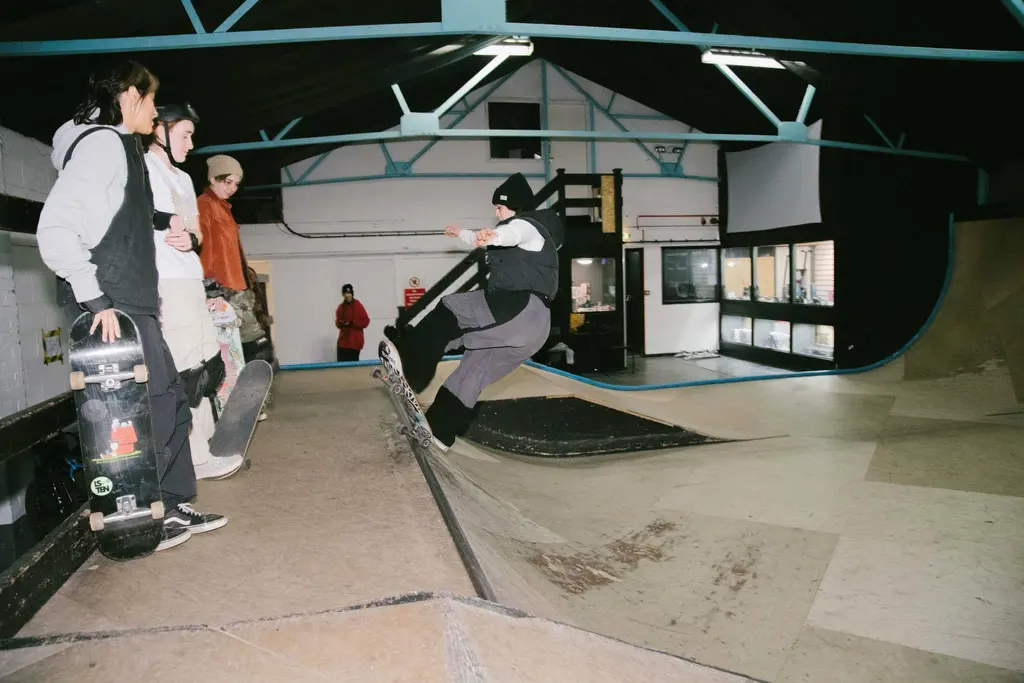Five things we learned from London’s anti-austerity march
- Text by Robin Nierynck
- Photography by Chris Bethell

“It’s a very basic thing that we’re protesting. We need to start thinking about people, not companies. It’s a basic gesture against neoliberalism, in its simplest form,” said Christian, 23, a student at the demonstration on Saturday 20 June.
This sentiment was echoed among participants young and old. A distinct feeling of unfairness reigned – It’s unfair that people struggle to feed themselves while companies continue to avoid tax (Dan, 32), unfair that the Tories have one rule for them and one rule for the rest of us (Susan, 63), unfair that money is pouring out of public services and into shareholders’ pockets (Carrie, 25).
While the government maintains that austerity is necessary to cut the country’s deficit and George Osborne plans another £25 billion of cuts – including a £12 billion cutback on social security – the people have taken a stand and made their voice heard.
Tens of thousands marched from the Bank of England to Parliament Square to protest the proposed cuts and other controversial policies, such as TTIP, health service privatisation and the cut price sell-off of bailed out banks. Here are some of the things that came out of Saturday’s demonstration, and the action that lies ahead.
The people engaged en masse
The People’s Assembly, which organised the demonstration, estimated that up to 250,000 people from all over the country attended the march in what was anticipated to be the biggest anti-austerity protest of the year. Though according to the BBC, “the Met Police have not estimated how many people were there,” this wildly eclipses the original expectation of around 70,000 participants. Among the attendees were many familiar faces, including Russell Brand, Owen Jones, Charlotte Church, Green MP Caroline Lucas and aspiring Labour leader Jeremy Corbyn.
Austerity affects all sections of society
A remarkable element of the demonstration was the diversity of the participants and of the issues represented. Ranging across age, gender, nationality and background, the demonstrators that turned up were many and varied.
Although austerity was the main focus of the demo, a huge number of groups attended the protest, campaigning for different issues – a testament to the reach of austerity measures into all sectors of society. Issues raised included fracking, immigration policies, student fees, welfare cuts, homelessness, the NHS and trident.
Democracy is not a one day event
Despite the taunts and sneers flung at protesters and political activists, it’s ludicrous to suggest that because the Conservatives were “voted in” (by just a quarter of eligible voters, but let’s not digress), the next five years are to be spent in meek silence. Democracy isn’t a one-day event where people turn up to vote and let the experts decide from then on. A fundamental aspect of democracy is that politicians are held to account and challenged, and the people have a right to voice their concerns – a right they exercised in great numbers on Saturday.
Peaceful protest is the word of the day
The extensive presence of the Metropolitan Police suggested a revolt was about to break out, but the event was all but entirely peaceful. A handful of bonfires were made with placards and some smoke bombs were set off, but there have been no reports yet of any serious violence. This bodes well for the legitimacy of the movement. Meanwhile, there were reports of a Metropolitan Police crackdown on activists previously linked to direct action protests ahead of the demonstration.
Concrete action must follow
Although the demonstration was in many ways a success it’s not the end of the road. Many of those who spoke at the rally in Parliament Square emphasised the need to push forward the momentum that has been reached rather than let it stagnate and disperse. Concrete action needs to be taken, opposition needs to be organised and the political effort directed if any real change is to be achieved. It’s to be seen if the People’s Assembly can organise the factions as well in the future as it did in this demo.
Enjoyed this article? Like Huck on Facebook or follow us on Twitter.
Latest on Huck

Clubbing is good for your health, according to neuroscientists
We Become One — A new documentary explores the positive effects that dance music and shared musical experiences can have on the human brain.
Written by: Zahra Onsori

In England’s rural north, skateboarding is femme
Zine scene — A new project from visual artist Juliet Klottrup, ‘Skate Like a Lass’, spotlights the FLINTA+ collectives who are redefining what it means to be a skater.
Written by: Zahra Onsori

Donald Trump says that “everything is computer” – does he have a point?
Huck’s March dispatch — As AI creeps increasingly into our daily lives and our attention spans are lost to social media content, newsletter columnist Emma Garland unpicks the US President’s eyebrow-raising turn of phrase at a White House car show.
Written by: Emma Garland

How the ’70s radicalised the landscape of photography
The ’70s Lens — Half a century ago, visionary photographers including Nan Goldin, Joel Meyerowitz and Larry Sultan pushed the envelope of what was possible in image-making, blurring the boundaries between high and low art. A new exhibition revisits the era.
Written by: Miss Rosen

The inner-city riding club serving Newcastle’s youth
Stepney Western — Harry Lawson’s new experimental documentary sets up a Western film in the English North East, by focusing on a stables that also functions as a charity for disadvantaged young people.
Written by: Isaac Muk

The British intimacy of ‘the afters’
Not Going Home — In 1998, photographer Mischa Haller travelled to nightclubs just as their doors were shutting and dancers streamed out onto the streets, capturing the country’s partying youth in the early morning haze.
Written by: Ella Glossop